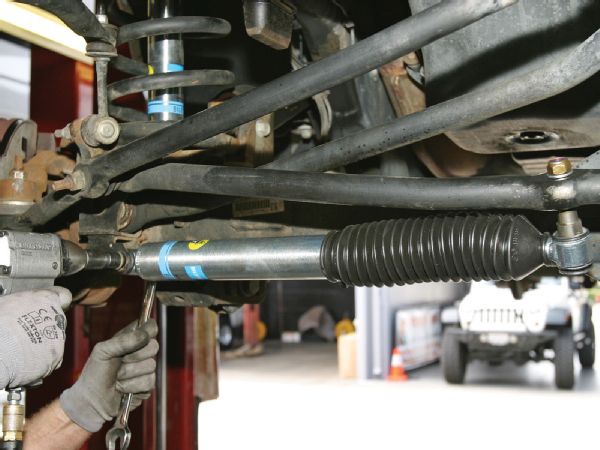
I wrote about steering stabilizers quite a few years ago trying to clear up a few untruths, false statements and an overall lack of knowledge as to their main purpose. What’s bringing up the subject again was that last week I stopped in at a local tire dealer and they had an early Ford truck on the rack that they were working on. I noticed that it had some fairly large tires on it, perhaps 37s or bigger, so naturally I had to take a closer look-see. The technician (remember to call them “technician,” as they are no longer just mechanics) was installing a third steering damper, er, steering “stabilizer.” Nope you’re right, I couldn’t keep my mouth closed but just had to ask: “Why three?” His reply was something like: it’s the only way we can keep the front end from wobbling down the road. We put on two and most of the problem was solved so we figure one more ought to do the trick. I just shook my head, mumbled something under my breath and went back to getting my flat fixed.

OK, let’s start all over again; while some use it for such, it is not a steering stabilizer. If you have to use it to stabilize the steering, then you’re using it as a Band-Aid to cover up another problem. It is a steering damper. Its job is to absorb the shock load to the steering components. By cushioning the load to the tie-rod ends, steering knuckles, and steering box, you can greatly extend their useful life. It’s just like hitting your head against an unpadded roll bar—it hurts! Do it really hard, or enough times and you get a concussion. Add some padding and it doesn’t hurt, well not as much anyway. It works the same way with the steering components.
All the time I hear from people who added larger tires to their higher-mileage rigs and then the vehicle wanders all over the road. They then add a steering stabilizer and the problem goes away for a while. Figuring two is better than one, they then add another one to solve the problem.
Next they place the blame on the tires. They didn’t have the problem until they added the larger tires so it must be the tires’ problem. Bad tires! There are lots of other areas that most likely should get blamed first, and then fixed or replaced. The larger tires exert more leverage, which accentuates any wear in the steering box itself or the tie-rod ends. And lest we forget, what about wear in the spring-eye bushings, trailing-arm bushings, or worn or improperly adjusted wheel bearings? The more wear in these components, the more slop there is in the steering.
Often when larger tires are added, some form of suspension lift also takes place. This can easily change caster, camber, and proper toe. A different offset or wider wheel can change steering scrub radius and even the camber curve on an IFS vehicle. One of the biggest culprits is lack of proper axle caster. Caster is the rearward inclination of the steering knuckle. Caster is what keeps you going down the road straight and what helps the wheels to straighten out after a turn. While improper caster doesn’t always directly cause a wheel wobble situation it can greatly accentuate the problem.
I will give you a bit of an example using something I built up and modified over 20 years ago, an early Dodge Power Wagon WM 300. For those not familiar with the model number, it looks like some of the 1¼-ton military trucks of WWII. Mine was built in the early ’50s. This truck had seen a hard life before I bought it and it showed. I totally rebuilt all the steering and driveline components to like-new or well as close to new as a truck of that vintage could be. I ran a homemade suspension lift, paying particular attention to the caster angle. With a lot of long hours I designed a power steering conversion, and then added 42-inch Super Swampers on homemade rims. Because everything was “tight and right”, it was one finger steering and went straight and true down the road or trail without a trace of wobble. All without a so-called steering stabilizer. Yes, I did add one later, not to stop steering wander but just to help absorb the shock loads caused by the larger tires.
So the point I’m making here is that if I can do it, so can you. Don’t use a stabilizer to cover up a problem that will eventually get worse, but by all means do add one for the damping of shock loads.
OK, one more thing, I have talked to several well known off-road shop owners, ones that I often rely on to help me out with tech problems, and they totally agree. However, they will admit knowing better but after searching and repairing everything that could possibly be causing a steering problem, they solved it with a steering damper, er, stabilizer. Go figure!